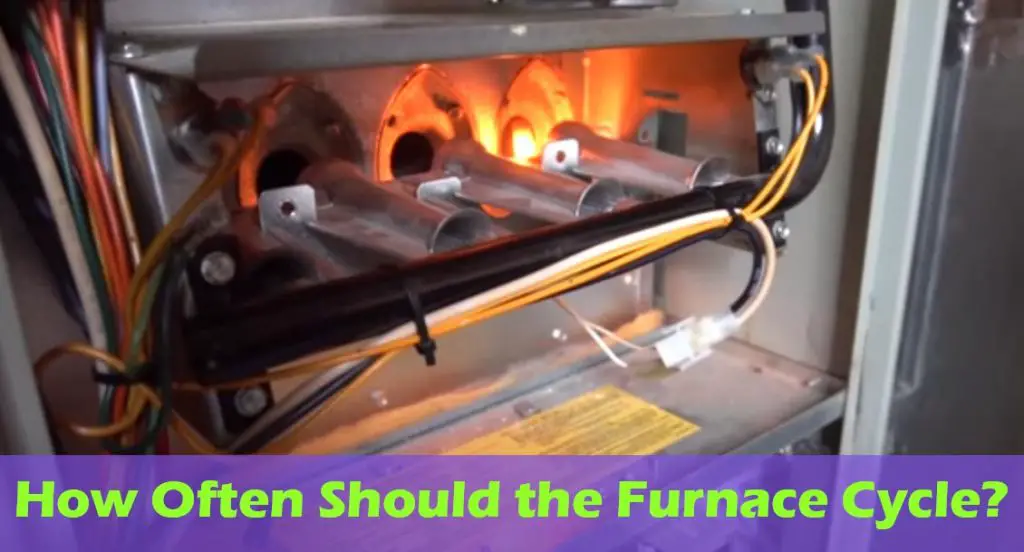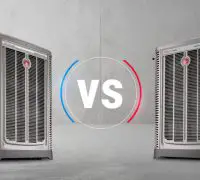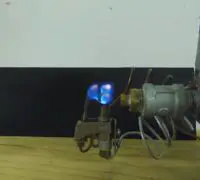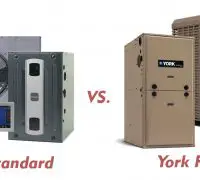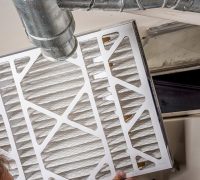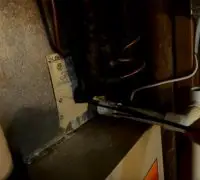Furnaces represent some of the most popular heating appliances for homeowners in the US. These reliable appliances heat numerous homes within our country and it’s understandable why many people will find the information below extremely handy.
If you’re a responsible homeowner, you probably know that your furnace shouldn’t operate continuously when powered on. It works in a process called “cycling,” which explains its energy efficiency. The furnace should start when the thermostat senses that the indoor temperature is lowered than wanted. Once the furnace delivers the desired temperature, it should turn off. It’s how it provides a balanced temperature for comfort.
Page Table of Contents
How often should the furnace cycle
Before you conclude that there’s something wrong with your furnace, you should know how frequently a furnace should cycle. Typically, a furnace should cycle four times per hour. However, various factors impact the frequency of cycling. The size of the HVAC system, the outdoor temperature, and the furnace’s efficiency influence the furnace’s cycling.
How often is a furnace supposed to cycle in winter?
If it’s freezing outside, the chances are the furnace will cycle more often than when the temperatures aren’t very low. It might happen because the furnace has to achieve the desired temperature.
Remember that the furnace shouldn’t turn on and off every few minutes, even if the temperatures are freezing. When this happens, there’s probably a problem with the furnace’s adjustment. Let’s see what factors impact the furnace’s cycling in the winter:
The house’s insulation
Insulation is crucial for a house to stay warm. When the insulation is poor, the furnace will have to work harder than usual to keep the house warm. A furnace in a house with proper insulation will cycle two to three times per hour to maintain the desired temperature. If the furnace cycles more often than that, poor house insulation could be the problem.
Here’s how you can check out your house’s insulation:
- Take a look at the wall and floor temperature
Start by examining the wall and floor temperature. Place your hand on the interior walls and floors. It’s a good sign if you feel them warm and dry to the touch.
- Check out the pipes (if possible)
Poor insulation will cause the freezing of the pipes. When the pipes freeze from time to time, you should consider calling professionals to insulate the pipes properly. You risk pipes bursting.
- Pay attention to drafts
If cold drafts run through the house, the insulation of your house is relatively poor. Don’t postpone fixing and take a look at the windows and the attic as well. Water leaks in such areas are also signs of poor insulation.
- Is the temperature consistent
Inconsistent temperature is probably the most obvious sign that your house’s insulation needs improvement. When the temperature inside the house is consistent, the insulation is proper and you needs to look elsewhere for why the furnace cycles too often.
The furnace’s size
If your furnace cycles more frequently than it should, you must check if it’s not too big for your house. Ideally, this is a step you take on before you buy and install the furnace. A certified HVAC technician can help you detect the proper size for your furnace according to your house’s square footage.
Typically, you will need 30-60btus per square foot, but the number depends significantly on your region. For instance, if you live in a warm climate, you only need 30-35btus, whereas a house in a cold region will require 50-60btus.
Your furnace is too big for your home if you notice any of the following signs:
- The furnace runs for a few minutes and then turns off
- The temperature throughout the house is uneven, with some rooms being too hot and others being incredibly cold
The furnace’s efficiency
When you examine the furnace’s cycling in the winter, its efficiency is a crucial factor to consider. High-efficiency furnaces will run more often than other models. They do it to reduce energy consumption and, of course, energy bills. If you have a high-efficiency furnace, expect it to operate 80% of the day or longer during the winter. Such furnaces will operate two to three times per hour.
One or two-stage HVAC system
The cycling timing also depends on whether you have a one or two-stage HVAC system. A one-stage HVAC system will operate with an on-off switch. Therefore, it either operates at full power or not at all. Old models are a commonly one-stage type of system.
Two-stage HVAC systems will heat and cool at fast and slow speeds. Their cycles are longer than those of the one-stage systems; they also don’t generate as many temperature swings as their counterparts. Most two-stage furnaces will cycle one to three times per hour.
The average run time of a furnace cycle
The average furnace cycle run time takes between 10 and 15 minutes. If your furnace’s cycles are shorter or longer than this, you shouldn’t assume that there’s something wrong with it. However, if the furnace keeps on short cycling even when the weather is mild, you might have to call in the professionals.
The longer the furnace cycles, the longer it will last, as starting and stopping makes the furnace wear out before its time.
Is it bad for a furnace to run frequently?
When the furnace is kept at higher than usual temperatures and for longer durations than regular, the problems won’t occur right away. However, frequently running the furnace or maintaining it at high temperatures can generate more wear and tear.
When you are okay with paying high energy bills in the wintertime to keep the house warm, it shouldn’t be a problem to keep the thermostat up and running the furnace more frequently than usual. Don’t forget that gas furnaces will use more energy and produce more carbon dioxide than when used less frequently.
Steps to avoid improper heating cycles
Improper heating cycles can harm the furnace and alter its performance and durability. You can avoid incorrect furnace cycling with some measures:
- Examine the vents
Make sure that the vents are not blocked when the furnace is operating. Closed vents are okay, but blocked vents will cause problems because excess heating will harm the system. Additionally, clean the ducts every few years to ensure that the air flows through them effectively.
- Keep the furnace filter clean
The furnace’s filter should always be clean. Make a routine schedule for cleaning and even replacing the filter whenever necessary. A clogged filter can alter the furnace’s cycling and cause expensive energy bills.
- Have fresh batteries in the thermostat
See that the thermostat is always in good condition and has fresh batteries. Even if a dying battery may not be the only problem with your thermostat, you don’t want your furnace to run too often because of such a minor thing.
If you’re looking for a new heating system, opt for a high-energy gas furnace that produces less CO2 yearly. However, if you already have a furnace and don’t want to run it all the time, there are various ways to contribute to keeping the house warm. After all, you want to extend the furnace’s lifespan and enjoy its performance for as long as possible.
